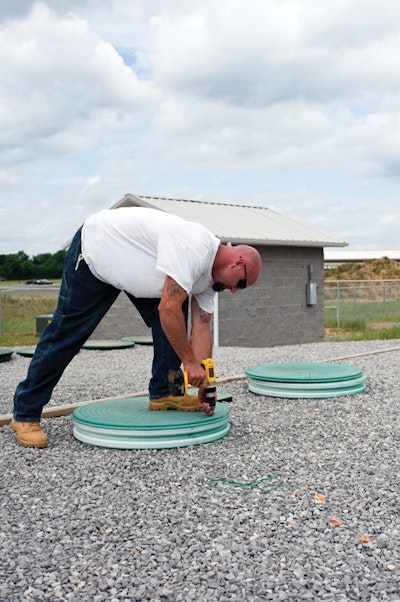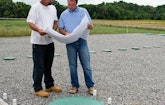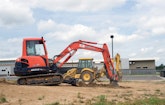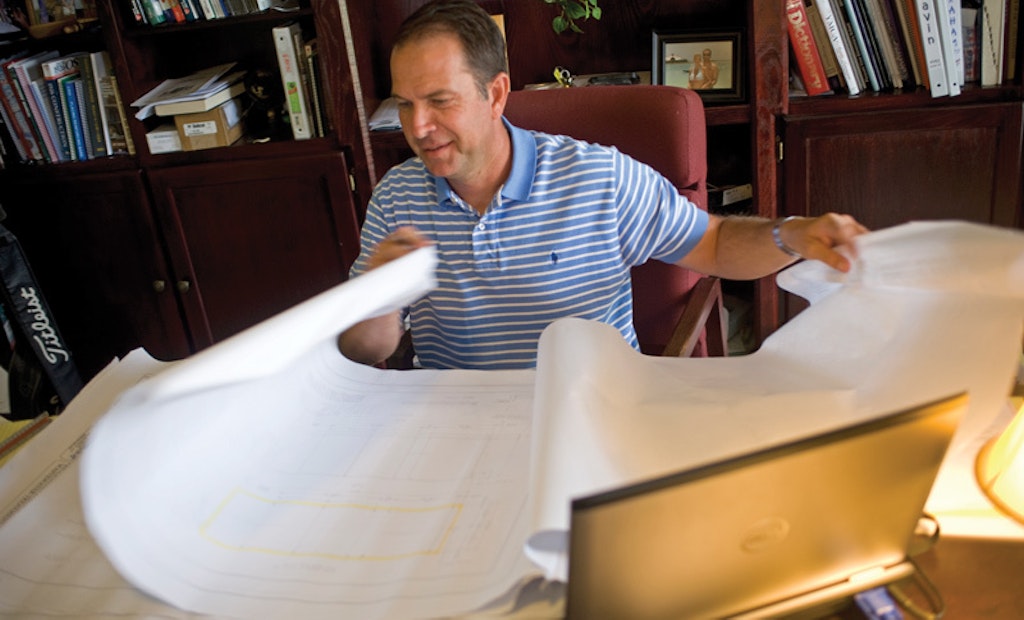Interested in Distribution?
Get Distribution articles, news and videos right in your inbox! Sign up now.
Distribution + Get AlertsWhen Glenn Marcum created the EcoStruct Group LLC in Pleasant View, Tenn., he grounded the firm in both the past and the future. The past was his experience acquired during years in the wastewater industry and knowledge of what banks and homeowners are looking for. The future is where he sees the industry heading, and that is not toward applying traditional solutions to new jobs.
Beyond his vision, Marcum sees three specific reasons for his business success during the past few years: the structure he chose for the business, his discipline in choosing work and his attention to developing productive relationships.
In its present configuration, Marcum has what he describes as an accordion business. He can expand or contract the size of his team as necessary by hiring short-term employees, joining with other small-business owners and contracting for the services they provide. He watches his contracts with an eye to maintaining liquidity.
“If you’re putting in all the money up front and depending upon the customer to pay you at some point, that is not advantageous to your business,” he says. Liquidity also demands care about equipment purchases. “If I can’t pay for it in two years, then I rent it. If I buy, then I buy brand new because I can’t be repairing equipment all the time.” His equipment at the moment consists of a Kubota Kx121-3 Super Series, a Bobcat T180, a Kubota rtv900, a Gradall 534D and a Ditch Witch plow.
Marcum purposely designed EcoStruct for the three factors that drive the construction industry now: banks, bond companies and project owners. Take those into account, address them in your presentation and you will get in where many others cannot, he says.
Projects and people
He began the business in 2009 with an advantage: a couple of projects he could start on immediately. But he has purposely kept his business small in order to respond to the new dictates of the money markets.
“Today banks want to know all about your liquidity,” Marcum says. “Banks and bonding companies are walking away from risk, or running away from it. They want to be certain a company has the cash on hand to undertake a project and has the resources to complete the project. Banks and bond companies love my detail and reporting.”
The downside to the accordion structure is that he is only one person. He is bookkeeper, salesman, lead technician, chief operating officer and ditchdigger. This will have to change as the business grows, and Marcum is struggling with that because of the type of person he needs to hire. To expand, he wants a person with technical skill or at least the interest and intelligence to learn the technical skills. But in addition to supervising a job site, a prospective employee must also be capable of representing the company at pre-bid meetings and in talks with clients.
“I’m having trouble finding the right person. It’s surprising in this economy that finding good workers is still a struggle,” Marcum says. The qualities he most values cannot be taught easily. Technical skills he can teach. “But I can’t teach discipline, loyalty and work ethic.” He doesn’t expect a new employee to pick up a set of plans and execute a job perfectly. “I understand people will make mistakes, but finding people who will take ownership has been my struggle.”
A typical project lasts three to six months, which means he usually does three to four jobs per year. This fits well with the structure of his company, and it means he can focus completely on one job at a time to ensure each is done well. That helps guard his reputation, which is a major concern. “It’s a reputation-driven business, especially for me building this business up from scratch. I want to be involved in every aspect of a job to make sure the quality control is there.”
Selective approach
Another habit that makes him successful is being disciplined about what work he accepts. That doesn’t mean turning down work when he needs the cash flow, but he prefers to focus. For example, he’s done projects at Fort Campbell, Ky., a large Army base about 30 minutes from home, but he hasn’t done everything offered when base officials have called about a job. “I just have to do what I do well, and do it very well,” he says.
It is important for installers to remember they’re selling even when they don’t think so, he says. “You’re a salesman every day. You present yourself every day,” he says. “When I walk into an engineer’s office and introduce myself, I’m making a presentation.”
This knowledge is the result of his time in the industry. As the construction industry settled into recession in 2009, Marcum was 36 and in his business career had known nothing other than 30 percent annual growth and readily available financing. After graduating from college with a degree in animal science, he had taken additional classes so he could work as a soil scientist, then earned an MBA and was a vice president of a design-build firm. The company he had worked at for 14 years, where he gained valuable experience, was going through a major downsizing. His job was about to change. Instead of waiting for better times or accepting what came, he started EcoStruct.
“I just felt it was time to go out on my own. Everybody around me said I was crazy because of the economy. I felt that with the relationships I had built and my knowledge, I could jump right in there and provide a great service,” he says.
Building relationships
Marcum returns to the same theme again and again for small-business success: building good relationships. An engineer he knew was involved at a wastewater project at a chocolate factory in Scranton, Pa. The factory was installing a system to treat wastewater to standards for discharge into the municipal sewer. The engineer asked Marcum for help.
EcoStruct installed an aeration system, complete with blowers and stainless steel piping in a 50,000 gpd aeration tank. Even though he had limited experience with stainless steel, Marcum took the job because it provided him with an opportunity to learn.
Another job grew out of a similar relationship. Marcum told a different engineer acquaintance he was starting a new business and asked the engineer to keep him in mind. The conversation resulted in a contract for EcoStruct to install a wastewater system with drip irrigation at an elementary school.
These relationships also make his accordion business structure possible. Through previous jobs and referrals for recent ones he has found subcontractors he likes and who do good work. If he’s on a job in a certain area and needs to have a building demolished, he knows a phone call will put him in touch with a reliable business owner who will do professional work. “Any time I get a chance to help someone, I do,” Marcum says. It produces rewards later because that contractor will return the favor.
“Surround yourself with quality people, and it makes your life a whole lot easier,” he says. “If I surround myself with quality people, I also improve my chances of success.”
Opportunity will knock
Marcum sees nothing but expanding opportunity. Greater demand for onsite systems is almost a given as the nation confronts the realities of its economy and its infrastructure needs, he says.
The big pipes of municipal sewer service are aging. Anyone who sees the news knows this, and they know cities are facing huge bills as pipes laid 50, 60, 80 or more years ago fail. Those pipes are the basis of our economy so there is no alternative to replacement, Marcum says. But unless we come up with some new source of funds, repair costs will reduce the amount of money available to extend municipal pipes to new developments. Developers and property owners will face the full cost of running municipal sewer to their land, and it will not be financially justifiable. That is the space Marcum wants EcoStruct to fill.
From an environmental point of view, treating wastewater on site is a more practical solution because the water isn’t moved anywhere, but returns to the aquifer from which it was drawn. It is a closing of the natural circle, he says. And new LEED codes coming from the U.S. Green Building Council are focusing on water and wastewater in addition to energy use, Marcum says.
Though he designed EcoStruct to be small, Marcum knows that will change and the company will grow. He’s just not sure when and how growth will happen. When his business reaches the point of doing more than one project at a time, the business structure will have to change. For the moment he will remain as he is. “Who knows what things will be like in three or four years? But I’m as happy as I can be.”











